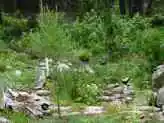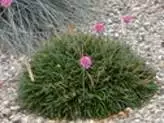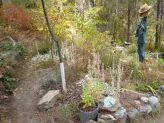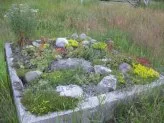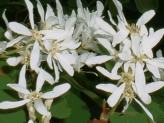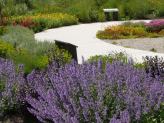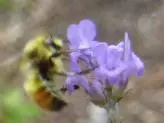Minimize the risk of wildfires in your landscaping
Fire smart gardening is one way to protect your home from the wildfires that are now more and more common.
Urban interface fires are the most dangerous for property damage, and for putting lives at risk.
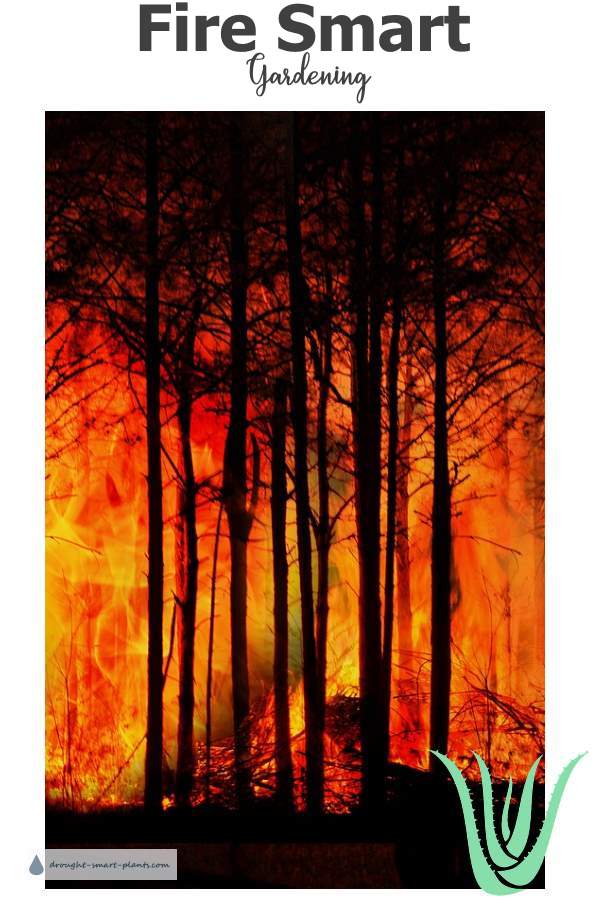
Climate change is upon us – and one way it’s become obvious is that wildfires are no longer a random one time event; they’re becoming a common occurrence in many areas around the world.
California sees wildfires spurred by El Nino and the Santa Anna winds, Australia has bush fires raging out of control and into residential areas, and British Columbia has seen a huge jump in the numbers, and size of wildfires all over the province.
The problem is not just that humans like to build their homes in the beautiful woodlands and forests.
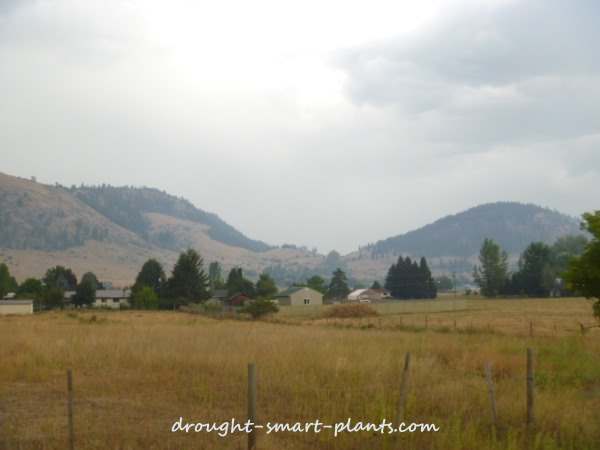
owing forests are coming back to haunt us.
Historically, harmless small fires going through young stands quickly came to a standstill after burning up the small fuels that had accumulated.
Then the practice started of putting out small forest fires, which meant that the next time fire started, either from lightening, or human carelessness, or worse, intent, the fire had much more fuel to burn, making the fire hotter, and much more dangerous as well as hard to extinguish.
Recently, with the climate changing to a warming trend, allowing the Mountain Pine Beetle and other pests to overwinter and spread, whole forests infested with these beetles are dying. This provides the perfect storm, just waiting for yet another dry summer and an ignition source, and the province goes up in flames.
Fire smart gardening techniques encourage each builder, gardener and landscaper to prevent these inevitable wildfires from coming too close to our homes. Here are a few ways to be pro-active:
- Build your house out of less flammable materials, such as metal or concrete roofing rather than cedar shakes or asphalt, and stucco instead of wood siding.
- Eliminate the ladder effect of shrubs planted under trees, and grasses planted under shrubs, especially close to the house or other buildings.
- Plant non-flammable plantings close to the house so the fire has to stop more than thirty meters away.
- Put hardscaping such as paving, patios, and walkways made from concrete, stone or other non-burnable materials close to the house.
Important Point to Remember:
Just because a plant is drought tolerant, it does not mean that they are not flammable.
Many drought smart strategies used by plants to prevent moisture loss create the exact conditions needed by fire to spread, such as; pitch or resinous sap, twiggy growth, or shedding or collection of dry needles, leaves or other detritus under drought conditions.
In terrible fires in California, fire smart gardening saved some homes by the use of succulent plants which prevented the fire from reaching the house, even though all around were destroyed.
The landscaping was not originally intended to be fire smart but the wise choice of succulent plants contributed to the safety of the house and its occupants.
Choose from among the plants listed here for your fire smart gardening:
Trees:
Maple (Acer species)
Trembling Aspen (Populus tremuloides)
Willow (Salix species)
Birch (Betula species)
Cottonwood (Populus trichocarpa)
Mountain Ash (Sorbus species)
Shrubs:
Dogwood, Red-osier(Cornus sericea, C. stolonifera)
Cotoneaster (Cotoneaster ssp.)
Cotoneaster, Rock (Cotoneaster horizontalis)
Cotoneaster, Bearberry (Cotoneaster dammerii)
Honeysuckle (Lonicera spp.)
Mockorange (Philadelphus spp.)
Plum, Native (Prunus americana)
Sumac, Skunkbush (Rhus trilobata)
Gooseberries and Currants (Ribes spp.)
Roses, most members of this family (Rosaceae)
Raspberry (Rubus spp.)
Buffaloberry, Russett(Shepherdia canadensis)
Buffaloberry, Silver(Shepherdia angentea)
Lilac, Common (Syringa vulgaris)
Groundcovers:
Kinnikinnick (Arctostaphylos uva-ursi)
Wild Ginger (Asarum caudatum)
Snowbrush (Ceanothus species)
Cotoneaster (Cotoneaster species)
English Ivy (Hedera helix)
Honeysuckle (Lonicera species-low shrubs/vines)
Buckthorn (Rhamnus species)
Virginia Creeper (Parthenocissus quinquefolia)
Sumac (Rhus species)
Rose (Rosa species – bush/hedges)
Periwinkle (Vinca species)
Currant/Gooseberry (Ribes species)
Perennial Plants:
Yarrow (Achillea species)
Carpet Bugle (Ajuga reptans)
Columbine (Aquilegia species)
Thrift (Armeria species)
Wormwood (Artemesia species)
Bergenia (Bergenia)Red Valerian (Centranthus ruber)
Snow-in-summer (Cerastium tomentosum)
Coreopsis (Coreopsis species)
Dianthus (Dianthus species)
Blanket Flower (Gaillardia species)
Hardy Geranium (Geranium species)Daylily (Hemerocallis species)
Coral Bells (Heuchera)
Candytuft (Iberis species)
Iris (Iris species & hybrids)
Red-hot Poker (Kniphofia species)
Lavender (Lavendula species)
Flax (Linum species)Evening Primrose (Oenothera)
Poppies (Papaver hybrids)
Penstemon (Penstemon species)
Salvia (Salvia hybrids)
Stonecrop (Sedum)
Hen & Chicks (Sempervivum species)
Lamb’s Ear (Stachys byzantina)
Thyme (Thymus pseudolanuginosis, T. praecox arcticus)
Yucca (Yucca species)
Grasses:
Kentucky Bluegrass (Poa pratensis)
Buffalograss (Buchloe dactyloides)
Fescue (Festuca spp.)
Fescue, Blue (Festuca cinerea)
Fescue, Tall (Festuca arundinacea)
Fescue, Creeping Red (Festuca rubra)
Wheatgrass, Western (Agropyron cristatum)
Wheatgrass, Crested (low-growing)(Agropyron cristatum)
Look for plants with these characteristics for the safest choices:
- Slow growing deciduous trees and shrubs.
- Trees and shrubs with thick bark.
- Succulents and other plants with fleshy, watery leaves or stems.
- Plants with open, airy branching habits and thin foliage.
- Plants with thin, odorless sap.
- Plants with deep root systems or taproots.
…and avoid plants with these traits – especially near buildings:
- Conifers with needle-shaped leaves, such as pine, spruce, and fir.
- Plants with high levels of fats or oils, including many plants with waxy leaves.
- Plants with sticky or gummy sap, and plants with strong aromas.
- Plants with dense foliage, thorns, or multiple stems that tend to “collect” fallen leaves, needles, fallen branches, seedpods, and other debris from themselves and their surroundings.
As an added bonus, using this type of fire resistant plant will also prevent soil erosion.
Using some of these techniques and tips will help keep your home safe from wildfires – plant wisely, and be a fire smart gardener.

